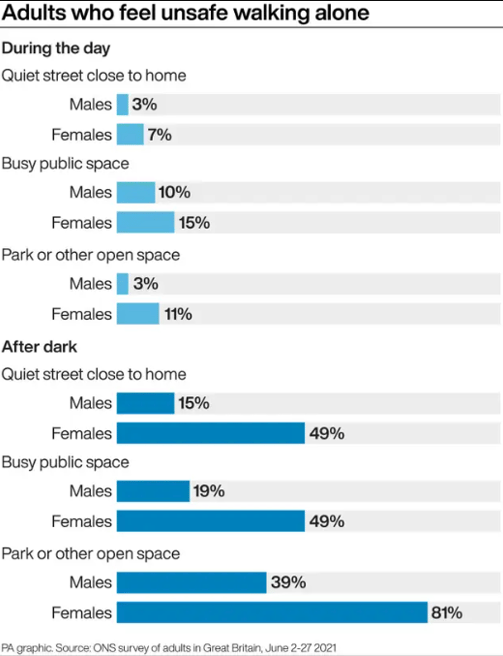Goal of my Project
Introduction:


The goal of this project is to optimize safe walking routes for pedestrians at night using street lighting data in Madison, WI. This kind of optimization can be used in navigation apps to improve safety after dark. People tend to feel safer when walking in well-lit areas, especially when walking alone.
Studies show that this concern is widespread. Over the past 60 years, one in three women have reported feeling unsafe walking at night. According to the Office for National Statistics (ONS) survey conducted in Great Britain in June 2021, 49% of women said they feel unsafe walking alone after sunset. That number increases to 81% when walking through parks or open spaces.
Source: ONS Survey of Adults in Great Britain, June 2–27, 2021.
This made us ask an important question:
What if our navigation systems could create paths that were not only short, but also well-lit?
That question led our team to build a model that could find the best route between two places on a map, considering both the distance and the lighting levels. Our model balances a tradeoff between these two factors — because if you only consider distance or only consider lighting, the results might conflict or be unhelpful.
To build this model, we first used a Python script with the osmnx package to call the OpenStreetMap API. This allowed us to collect a list of all walking intersections (which we treated as nodes) and the sidewalks or paths connecting them (which we treated as edges).
Next, we gathered real-world streetlight data from the City of Madison’s open GIS platform. We used a dataset called “City Maintained Street Lights – Luminaire”, which includes exact GPS locations for every streetlight maintained by the city.
Click here to view the Madison streetlight dataset
Using this data, we matched each streetlight to the closest road segment in our walking path data. This allowed us to assign a lamp count to every segment of the sidewalk or walking path.
Our model currently covers all of Madison, WI, but the area could be expanded — although doing so may increase the runtime of the optimization algorithm.